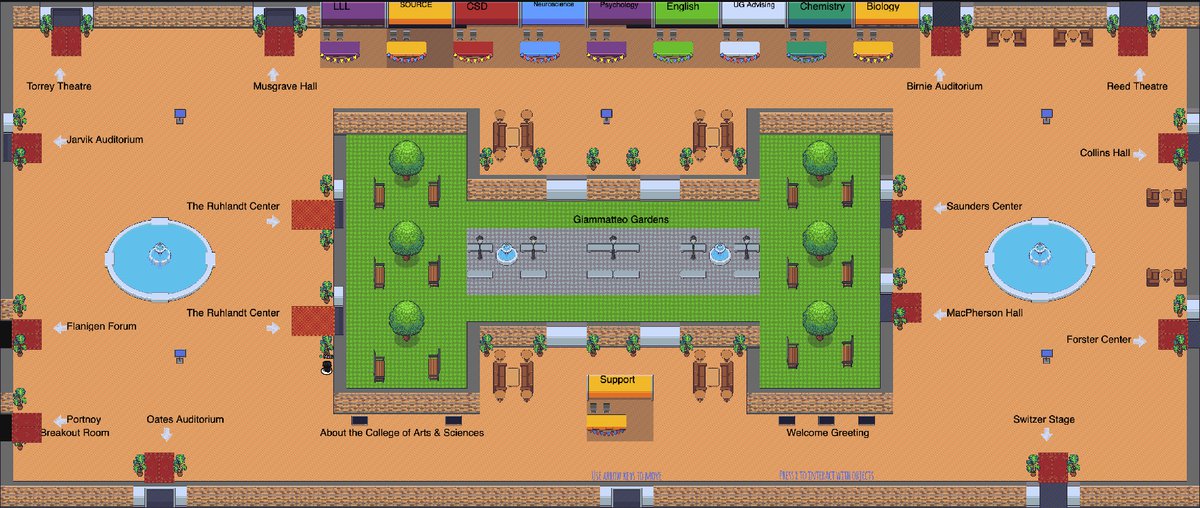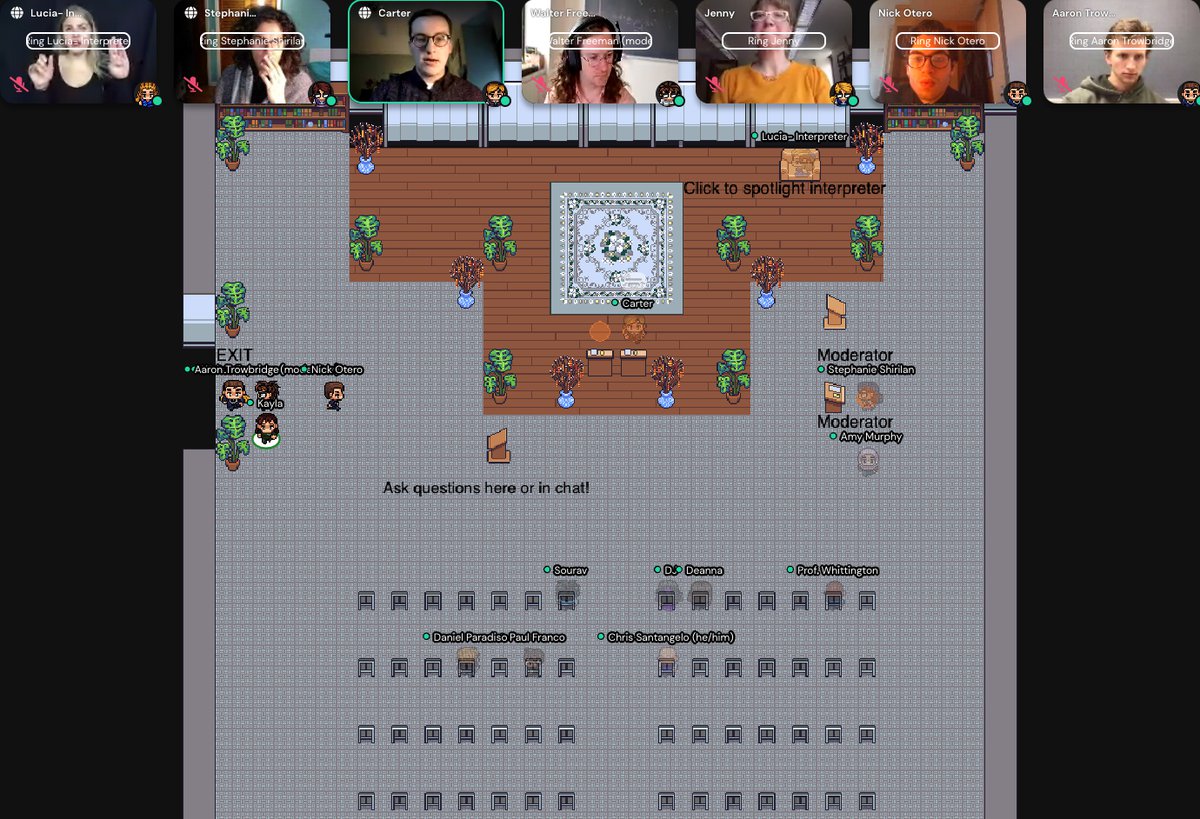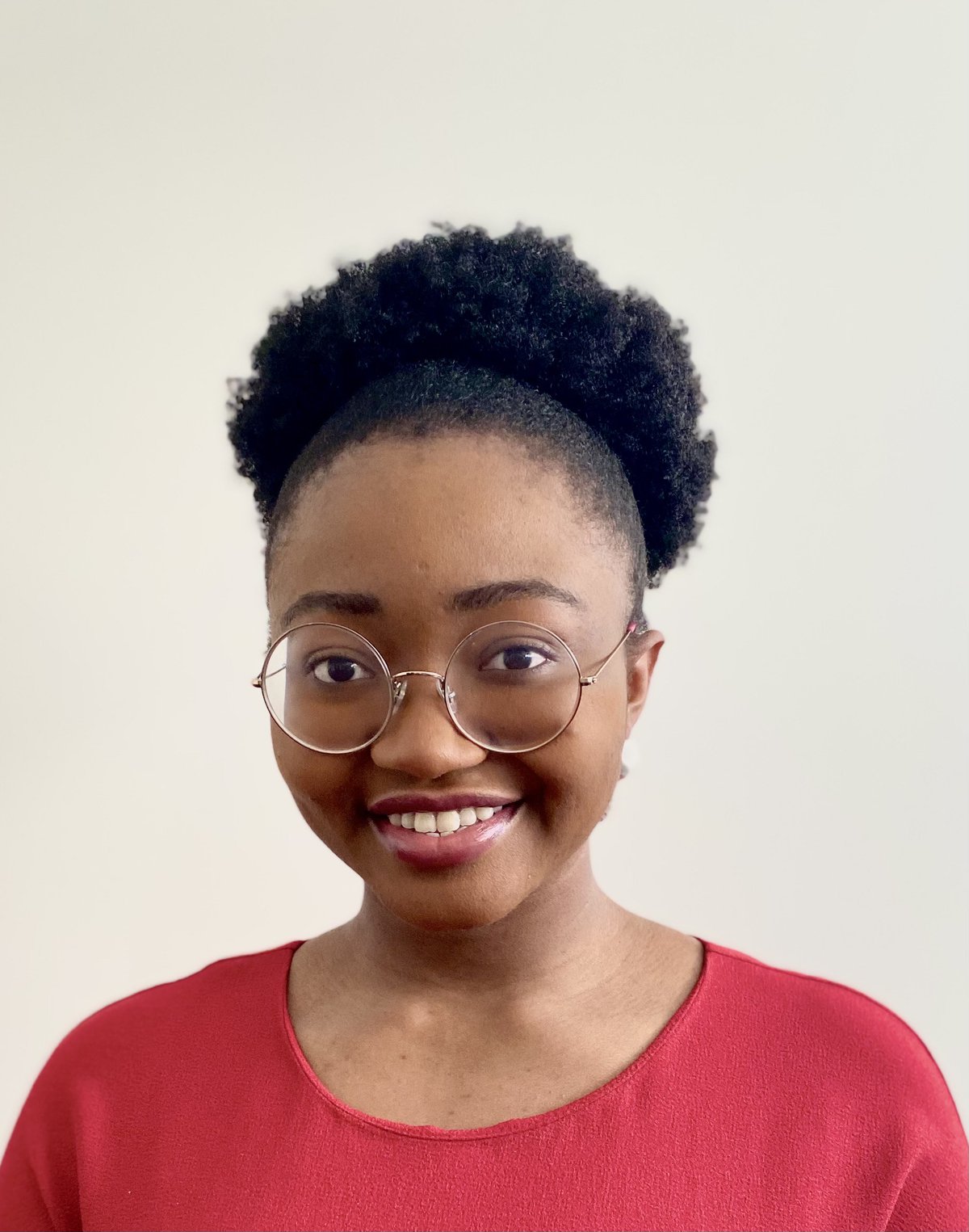Virtual Platform, In-Person Feel: Innovating at the A&S Undergraduate Research Festival
The College of Arts and Sciences’ (A&S’) annual undergraduate research festival explored exciting new territory this year. The event, designed to bring together students, faculty and staff around science- and humanities-related projects in a physical space, was held virtually with a retro vibe. This innovative new format allowed participants to have meaningful informal interaction with other attendees, including many who might not ordinarily have been able to attend an in-person festival. With more than 125 student presenters, it was among the largest of any such event at Syracuse University.

The main meeting area for the A&S undergraduate research festival, hosted on the virtual platform Gather.town.
A&S undergraduate students presented their research projects on a platform called Gather.town on April 30. The web-conferencing software features virtual rooms where attendees move their character around the space using the arrow keys on their keyboard. As in real life, participants were able to “walk around” and view different projects organized into themed areas, named after A&S Fearless Firsts.
A unique feature of Gather.town is the ability to meet and speak with other festival attendees face-to-face. As someone approaches another participant’s avatar, a video window appears, similar to programs like Zoom. This allowed attendees to both see, and speak, with student researchers, faculty and other festival-goers.
Over 300 people attended the virtual festival, viewing over 75 poster exhibitions by 100 students and live presentations and question-and-answer sessions by another 25 students.
Organizers say one of the advantages of using Gather.town was the unprecedented public access it provided to A&S undergraduate research. For the first time, projects were available for people to view from around the world – including family members who might not have been able to attend an in-person festival.

Festival attendees viewing a virtual presentation.
Lois Agnew, Associate Dean of Curriculum and professor of writing studies, rhetoric and composition in A&S, says organizers were thrilled to offer this festival’s distinctive approach after having to cancel the 2020 installment altogether due to the COVID-19 pandemic.
“Bringing together student researchers from across our large college in a single space provided a wonderful opportunity for students, faculty and families to see what our students have been working on!” Agnew says.
Subjects spanned the diverse range of study in A&S. From “Russian Caviar: A Delicacy in Jeopardy” (Bronwyn Galloway ’21), to “Acoustic Detection of Equine Lameness” (Zachary Ginkel ’21), there were presentations to pique myriad interests at the A&S undergraduate research festival.

Alaba Anna Tam Danagogo ’21, a biology major and English and textual studies minor in A&S, shared her research on a gene called Cited2 at the undergraduate research festival.
Student presenter Alaba Anna Tam Danagogo ’21, a biology major and English and textual studies minor in A&S, and the student speaker during A&S’ virtual undergraduate convocation, shared her research on a gene called Cited2. Danagogo has been studying how Cited2 recruits other genes to influence the early development of cells in the brain’s neocortex, which controls functions such as sensory perception, generation of motor commands, spatial reasoning and conscious thought. She explains that a better understanding of the role of Cited2 in the neocortex could eventually lead to opportunities to develop therapeutic approaches to cure disorders that affect the development of the nervous system.
Danagogo says having the chance to communicate her research to others as an undergraduate student will pay dividends throughout her scientific career. “I'm grateful that I had the opportunity to share my work with peers, faculty and so many others. Presenting undergraduate research in this way introduces us to the expectations of the scientific community and also builds confidence in our efforts as young researchers,” she says.
According to Karin Ruhlandt, Dean of A&S, this event demonstrated the incredible breadth and depth of research in the College. “Hands-on research, side by side with our faculty, is a hallmark of the A&S undergraduate experience. Thanks to the dedication of our faculty, and the guidance of our academic advisors, countless students are pursuing their research interests while advancing a field of knowledge. I am proud that we were able to share their work with the Syracuse University community in this unique setting,” Ruhlandt says.
In addition to student research, attendees were also able to visit information tables and learn more about research opportunities that are available through A&S departments and through the University’s SOURCE program, which fosters and supports diverse undergraduate participation in faculty-guided scholarly research and creative inquiry.

